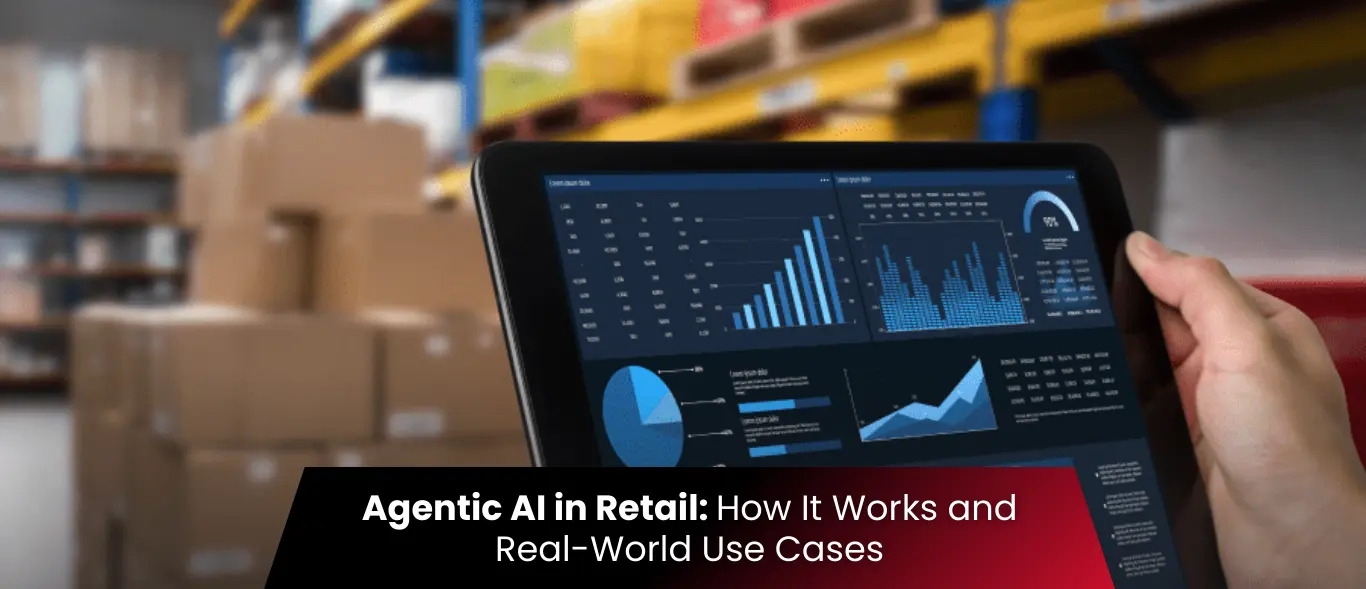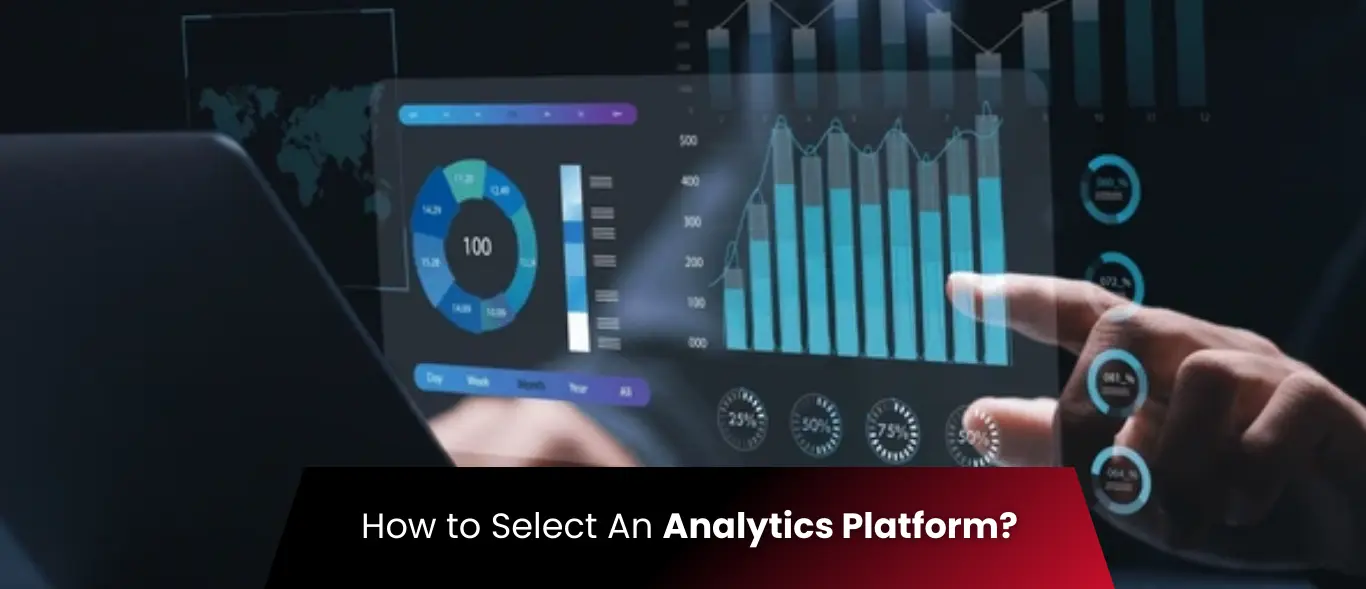In today's rapidly evolving business landscape, organizations need analytics solutions that can adapt quickly to changing requirements, scale efficiently, and integrate seamlessly with existing systems. Traditional monolithic analytics platforms often struggle to meet these demands, leading to rigid solutions that are difficult to modify, expensive to maintain, and slow to deliver value.
This is where composable data analytics comes in—a modern approach that breaks down analytics solutions into modular, reusable components that can be assembled, configured, and modified quickly and efficiently to meet specific business needs.
Why Composable Data Analytics Matters
1. Business Agility
Modern businesses operate in dynamic environments where:
- Requirements Change Rapidly: Business needs evolve quickly due to market changes, competitive pressures, and strategic shifts
- Time to Value is Critical: Organizations need analytics solutions that can be deployed and modified quickly
- Innovation is Continuous: New analytics capabilities are constantly required to support business innovation
- Competitive Pressure is High: Organizations must respond quickly to market opportunities and threats
2. Technology Evolution
The analytics technology landscape is constantly evolving:
- New Tools Emerge Regularly: New analytics platforms, algorithms, and techniques are developed continuously
- Integration Requirements Change: Organizations need to connect with new data sources and systems
- Scalability Demands Increase: Data volumes and processing requirements grow exponentially
- Cloud Adoption Accelerates: Organizations move analytics to cloud platforms with different capabilities
3. Cost and Resource Constraints
Organizations face increasing pressure to:
- Reduce Development Costs: Minimize the cost of building and maintaining analytics solutions
- Optimize Resource Utilization: Make better use of limited technical and financial resources
- Accelerate Time to Market: Deploy analytics solutions faster to capture business value
- Improve ROI: Maximize return on investment in analytics capabilities
What is Composable Data Analytics?
Composable data analytics is an architectural approach that treats analytics solutions as collections of modular, reusable components that can be assembled, configured, and modified independently. This approach enables organizations to build flexible, scalable analytics solutions that adapt to changing business needs.
Key Principles
- Modularity: Analytics solutions are built from discrete, self-contained components
- Reusability: Components can be used across multiple solutions and projects
- Interoperability: Components work together seamlessly through well-defined interfaces
- Configurability: Components can be adapted to different use cases without modification
- Scalability: Solutions can grow by adding or modifying components
Core Components
1. Data Ingestion Components
- Connectors: Interface with various data sources (databases, APIs, files, streams)
- Transformers: Convert data between different formats and structures
- Validators: Ensure data quality and consistency
- Enrichers: Add context and metadata to data
2. Processing Components
- Aggregators: Summarize and group data for analysis
- Calculators: Perform mathematical and statistical operations
- Filters: Select relevant data based on criteria
- Sorters: Organize data in meaningful sequences
3. Analytics Components
- Statistical Models: Perform statistical analysis and hypothesis testing
- Machine Learning Models: Apply predictive and classification algorithms
- Business Rules: Implement business logic and decision criteria
- Optimization Engines: Find optimal solutions to business problems
4. Visualization Components
- Charts and Graphs: Display data in visual formats
- Dashboards: Present multiple visualizations in organized layouts
- Reports: Generate structured reports for different audiences
- Interactive Elements: Enable user interaction with visualizations
5. Integration Components
- APIs: Expose analytics capabilities to other systems
- Webhooks: Trigger actions based on analytics events
- Message Queues: Integrate with event-driven architectures
- Data Exporters: Send results to other systems and platforms
How Composable Data Analytics Works
1. Component Design and Development
Design Principles
- Single Responsibility: Each component has one clear purpose
- Loose Coupling: Components depend minimally on each other
- High Cohesion: Related functionality is grouped together
- Interface Consistency: Components communicate through standardized interfaces
Development Standards
- API Design: Well-defined interfaces for component interaction
- Documentation: Comprehensive documentation of component capabilities
- Testing: Thorough testing of individual components and interactions
- Versioning: Clear versioning strategy for component evolution
2. Component Assembly and Configuration
Assembly Patterns
- Pipeline Pattern: Components process data in sequential order
- Fan-Out Pattern: Data is distributed to multiple components for parallel processing
- Fan-In Pattern: Results from multiple components are combined
- Conditional Pattern: Components are executed based on data conditions
Configuration Management
- Parameter Files: External configuration of component behavior
- Environment Variables: Runtime configuration based on deployment environment
- Dynamic Configuration: Runtime modification of component settings
- Configuration Validation: Verification of configuration correctness
3. Runtime Execution and Management
Execution Engine
- Component Orchestration: Coordination of component execution
- Data Flow Management: Movement of data between components
- Error Handling: Graceful handling of component failures
- Performance Monitoring: Tracking of component and system performance
Resource Management
- Scaling: Automatic scaling of components based on demand
- Load Balancing: Distribution of work across component instances
- Resource Allocation: Efficient use of computing and storage resources
- Cost Optimization: Minimization of resource costs
Benefits of Composable Data Analytics
1. Flexibility and Adaptability
Rapid Modification
- Quick Changes: Modify analytics solutions without rebuilding entire systems
- Incremental Updates: Add new capabilities without disrupting existing functionality
- A/B Testing: Easily test different approaches and configurations
- Feature Toggles: Enable or disable features without deployment
Business Alignment
- Evolving Requirements: Adapt solutions as business needs change
- Department-Specific Needs: Customize solutions for different business units
- Regulatory Compliance: Modify solutions to meet changing compliance requirements
- Competitive Response: Quickly implement new analytics capabilities
2. Cost and Resource Efficiency
Development Efficiency
- Reusable Components: Leverage existing components for new solutions
- Reduced Duplication: Avoid rebuilding similar functionality
- Faster Development: Assemble solutions from proven components
- Lower Maintenance: Maintain components independently
Operational Efficiency
- Resource Optimization: Use resources more efficiently through better scaling
- Reduced Downtime: Modify components without affecting entire systems
- Faster Deployment: Deploy changes to individual components
- Better Monitoring: Monitor and optimize individual components
3. Scalability and Performance
Horizontal Scaling
- Component-Level Scaling: Scale individual components based on demand
- Load Distribution: Distribute work across multiple component instances
- Resource Isolation: Isolate performance issues to specific components
- Efficient Resource Use: Allocate resources where they're needed most
Performance Optimization
- Component Optimization: Optimize individual components for particular use cases
- Parallel Processing: Execute components in parallel where possible
- Caching Strategies: Implement caching at the component level
- Performance Monitoring: Track and optimize component performance
4. Innovation and Experimentation
Rapid Prototyping
- Quick Validation: Test new ideas quickly with minimal investment
- Iterative Development: Refine solutions based on feedback
- Risk Mitigation: Test changes in isolation before full deployment
- Learning Acceleration: Learn from experiments and iterate quickly
Technology Adoption
- New Tool Integration: Easily integrate new analytics tools and platforms
- Algorithm Experimentation: Test new algorithms without rebuilding systems
- Platform Migration: Migrate components to new platforms incrementally
- Vendor Flexibility: Avoid lock-in to specific vendors or platforms
Implementation Strategies
1. Assessment and Planning
Current State Analysis
- Existing Analytics: Evaluate current analytics capabilities and limitations
- Data Architecture: Assess current data infrastructure and integration
- Technology Stack: Review existing tools, platforms, and technologies
- Organizational Readiness: Evaluate team skills and change readiness
Target State Definition
- Business Requirements: Define specific analytics needs and objectives
- Technical Architecture: Design a target composable analytics architecture
- Component Strategy: Plan component development and reuse strategy
- Migration Plan: Develop a roadmap for transitioning to a composable approach
2. Component Development
Component Identification
- Functional Analysis: Identify discrete functions that can be componentized
- Reuse Potential: Assess which components can be reused across solutions
- Interface Design: Design standardized interfaces for component interaction
- Dependency Mapping: Map dependencies between components
Development Standards
- Coding Standards: Establish consistent coding practices across components
- Testing Requirements: Define testing requirements for individual components
- Documentation Standards: Create comprehensive documentation for each component
- Version Control: Implement version control and release management
3. Assembly and Integration
Integration Framework
- Orchestration Engine: Implement a system for coordinating component execution
- Data Flow Management: Create a framework for managing data movement
- Configuration Management: Implement a system for managing component configuration
- Monitoring and Alerting: Set up systems for monitoring component performance
Testing and Validation
- Component Testing: Test individual components thoroughly
- Integration Testing: Test component interactions and data flow
- End-to-End Testing: Validate complete analytics solutions
- Performance Testing: Ensure solutions meet performance requirements
4. Deployment and Operations
Deployment Strategy
- Component Deployment: Deploy components independently
- Configuration Management: Manage component configuration across environments
- Rollback Capability: Implement the ability to roll back component changes
- Environment Consistency: Ensure consistency across development, testing, and production
Operational Management
- Monitoring and Alerting: Monitor component and system performance
- Logging and Tracing: Implement comprehensive logging for troubleshooting
- Performance Optimization: Continuously optimize component performance
- Incident Response: Develop processes for handling component failures
Technology Considerations
1. Platform and Infrastructure
Cloud Platforms
- AWS Services: Lambda, Step Functions, Glue, and other serverless services
- Azure Services: Functions, Logic Apps, Data Factory, and other managed services
- Google Cloud: Cloud Functions, Dataflow, and other serverless offerings
- Multi-Cloud: Strategies for using multiple cloud platforms
Container Technologies
- Docker: Containerization for consistent component deployment
- Kubernetes: Orchestration for managing containerized components
- Service Mesh: Communication and security between components
- Container Registry: Storage and distribution of component containers
2. Data and Integration
Data Management
- Data Lakes: Centralized storage for raw and processed data
- Data Warehouses: Structured storage for analytics data
- Streaming Platforms: Real-time data processing capabilities
- Data Catalogs: Discovery and governance of data assets
Integration Capabilities
- API Management: Design and management of component APIs
- Message Queues: Asynchronous communication between components
- Event Streaming: Real-time event processing and routing
- ETL/ELT Tools: Data transformation and loading capabilities
3. Analytics and Machine Learning
Analytics Platforms
- Statistical Tools: R, Python, and other statistical analysis platforms
- Business Intelligence: Tableau, Power BI, and other visualization tools
- Data Science Platforms: Jupyter, Databricks, and other collaborative environments
- Specialized Analytics: Industry-specific analytics tools and platforms
Machine Learning
- ML Frameworks: TensorFlow, PyTorch, and other ML frameworks
- AutoML Platforms: Automated machine learning tools and services
- Model Management: MLflow, Kubeflow, and other model lifecycle tools
- ML Operations: CI/CD and monitoring for machine learning models
Challenges and Considerations
1. Technical Challenges
Complexity Management
- Component Coordination: Managing interactions between many components
- Data Consistency: Ensuring data consistency across component boundaries
- Performance Optimization: Optimizing performance across component interactions
- Debugging and Troubleshooting: Identifying issues in complex component systems
Integration Challenges
- Interface Compatibility: Ensuring components work together seamlessly
- Data Format Consistency: Maintaining consistent data formats across components
- Error Handling: Coordinating error handling across component boundaries
- Performance Monitoring: Monitoring performance across distributed components
2. Organizational Challenges
Skills and Expertise
- Technical Skills: Developing expertise in component-based development
- Architecture Skills: Building architectural expertise for composable systems
- Operational Skills: Developing skills for managing component-based systems
- Change Management: Managing organizational change to new approaches
Governance and Standards
- Component Standards: Establishing standards for component development
- Quality Assurance: Ensuring quality across component development
- Security and Compliance: Maintaining security and compliance across components
- Vendor Management: Managing relationships with multiple technology vendors
3. Operational Challenges
Monitoring and Management
- System Complexity: Managing the complexity of component-based systems
- Performance Monitoring: Monitoring performance across distributed components
- Incident Response: Coordinating response to incidents across components
- Capacity Planning: Planning capacity for component-based systems
Maintenance and Updates
- Component Updates: Managing updates to individual components
- Dependency Management: Managing dependencies between components
- Version Compatibility: Ensuring compatibility between component versions
- Rollback Strategies: Implementing rollback strategies for component changes
Best Practices for Success
1. Start Small and Scale
Pilot Projects
- Limited Scope: Begin with small, focused projects
- Clear Objectives: Define clear success criteria for pilot projects
- Quick Wins: Identify opportunities for early success
- Learning Focus: Use pilot projects to learn and refine the approach
Gradual Expansion
- Incremental Growth: Expand scope gradually based on success
- Component Reuse: Leverage components from successful projects
- Best Practice Development: Develop best practices based on experience
- Organizational Learning: Build organizational expertise over time
2. Focus on Standards and Governance
Development Standards
- Consistent Patterns: Establish consistent patterns for component development
- Quality Requirements: Define quality requirements for all components
- Documentation Standards: Require comprehensive documentation
- Testing Requirements: Establish testing requirements for components
Governance Framework
- Component Approval: Implement the approval process for new components
- Quality Assurance: Establish quality assurance processes
- Security Review: Implement security review for all components
- Compliance Monitoring: Monitor compliance with organizational standards
3. Invest in Tools and Infrastructure
Development Tools
- Component Libraries: Build libraries of reusable components
- Development Frameworks: Implement frameworks for component development
- Testing Tools: Invest in tools for component testing and validation
- Documentation Tools: Use tools for maintaining component documentation
Operational Infrastructure
- Monitoring Tools: Implement comprehensive monitoring and alerting
- Deployment Tools: Invest in tools for component deployment and management
- Configuration Management: Implement tools for configuration management
- Performance Analysis: Use tools for performance analysis and optimization
4. Build Organizational Capability
Skills Development
- Training Programs: Develop training programs for component-based development
- Knowledge Sharing: Establish processes for sharing knowledge and best practices
- Mentoring: Implement mentoring programs for developing expertise
- External Expertise: Engage external experts for specialized knowledge
Change Management
- Leadership Support: Secure support from organizational leadership
- Communication Plans: Develop comprehensive communication plans
- Stakeholder Engagement: Engage stakeholders throughout the process
- Success Metrics: Define and track success metrics for the transition
Future Trends and Evolution
1. Advanced Automation
Intelligent Orchestration
- AI-Powered Orchestration: Use AI to optimize component execution
- Self-Optimizing Systems: Systems that automatically optimize their own performance
- Predictive Scaling: Predict and scale components before demand increases
- Automated Troubleshooting: Automatically identify and resolve component issues
Autonomous Components
- Self-Healing Components: Components that automatically recover from failures
- Adaptive Components: Components that adapt their behavior based on conditions
- Learning Components: Components that improve their performance over time
- Intelligent Routing: Smart routing of data to optimal components
2. Enhanced Integration
Seamless Connectivity
- Zero-Code Integration: Connect components without writing code
- Automatic Discovery: Automatically discover and connect compatible components
- Intelligent Matching: AI-powered matching of components to use cases
- Dynamic Composition: Automatically compose solutions from available components
Ecosystem Integration
- Marketplace Integration: Access to component marketplaces and catalogs
- Vendor Ecosystems: Integration with vendor-specific component ecosystems
- Open Source Integration: Leverage open source components and communities
- Industry Standards: Adoption of industry standards for component interoperability
3. Advanced Analytics
Next-Generation Components
- Quantum Computing Components: Components leveraging quantum computing capabilities
- Edge Computing Components: Components for edge and IoT environments
- Real-Time Components: Components for real-time analytics and decision-making
- Predictive Components: Components with advanced predictive capabilities
Enhanced Intelligence
- Explainable AI Components: Components that provide transparent AI insights
- Federated Learning Components: Components for collaborative machine learning
- Multi-Modal Components: Components that process multiple types of data
- Context-Aware Components: Components that adapt to user context and preferences
Conclusion
Composable data analytics represents a fundamental shift in how organizations approach analytics solution development and deployment. By breaking down analytics solutions into modular, reusable components, organizations can build flexible, scalable systems that adapt quickly to changing business needs and technological evolution.
The key to success with composable data analytics is to:
- Start Strategically: Begin with clear objectives and focused pilot projects
- Build Strong Foundations: Establish standards, governance, and infrastructure
- Focus on Reusability: Design components for maximum reuse and flexibility
- Invest in Capability: Develop organizational skills and expertise
- Iterate Continuously: Learn from experience and continuously improve
As organizations face increasing pressure to deliver analytics solutions faster, more efficiently, and with greater flexibility, composable data analytics provides a path forward. Organizations that successfully implement this approach will be better positioned to respond to changing business needs, adopt new technologies, and maintain a competitive advantage in the analytics space.
The journey to composable data analytics may require significant investment in technology, skills, and organizational change, but the benefits in terms of flexibility, efficiency, and innovation make it a worthwhile investment for organizations committed to analytics excellence and business agility.
Ready to transform your analytics with a composable approach? >>>> Learn More


